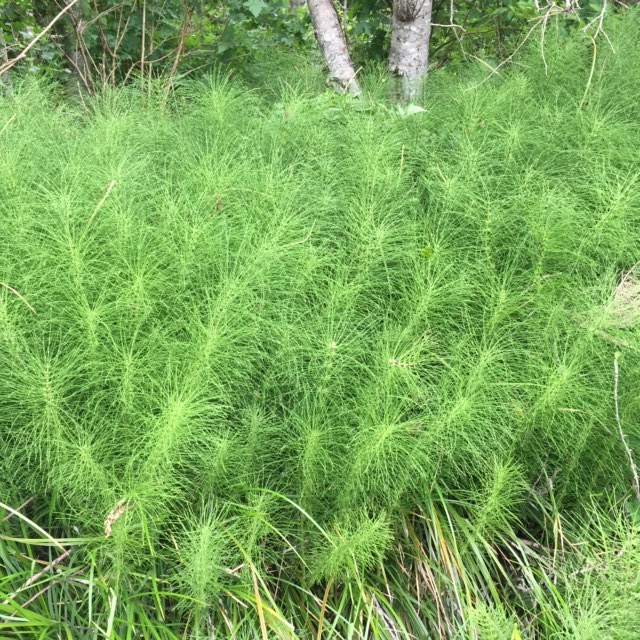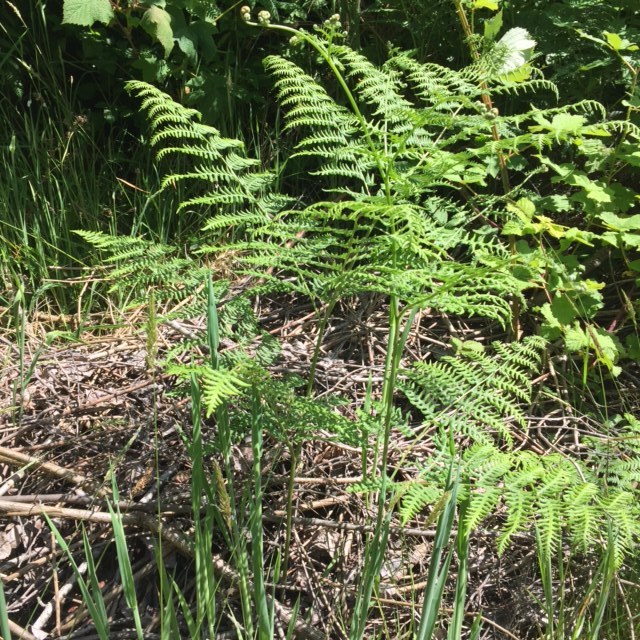Week 2: June 8-14th
Dye Process: Creating colour
These are the dyes that I made during the second week of my residency. They were created from plants local to Sointula unless otherwise marked (although for those plants that are not local, but grow locally, results would be similar):
- Horsetail
- Bracken fern
- Foxglove flowers
- Carnation flowers
- Twinberry
- Salmon berry
- Asters (road-side yellow flower similar to dandelion)
- Spruce cones (both pollen and seed cones)
- Spruce Bark used as a tannin bath pre-dye
- Arbutus (leaves and twigs)
- Broom flowers
- Alder bark
- Onion Skin (from various sources) *Not local
- Rhubarb stems and leaves (from Vancouver & the grocery store) *Not local
- Dyers Polypore (mushroom collected in North Vancouver) *Not local
- Velvet Pax (mushroom collected in North Vancouver) *Not local
- Red Sandalwood (purchased as a powder - native to southern India) *Not local
- Logwood (purchased as a powder - native to Central and northern South America) *Not local
- Eucalyptus (from our wedding flowers) *Not local
Some other plants that may grow locally that can be used as dye:
- Blackberry shoots and berries
- Elderberry berries and leaves
- Foxglove stems and leaves
- Japanese knotweed
- Marigold flowers
- Plantain (leaves and roots)
- Sorrel
- Yarrow
- Young fustic (smoke tree) bark and wood
Dye plants used by First Peoples in British Columbia, :
- Alder bark and leaves (orange-red, brown-red and yellow) - Techniques include chewing the bark and boiling it with saliva, or using urine as a mordant
- Antelope-brush fruit (reddish)
- Birch bark and leaves
- Black Huckleberry (purple)
- Blueberries (purple)
- Other berries such as Cranberry, Crowberry, and Black Current
- Cascara bark (green)
- Douglas Fir needles (yellow)
- Flowering Dogwood bark (deep brown) mixed with Grand Fir bark (black)
- Green pond slime (green)
- Lamb's Quarters, young shoots (green)
- Montana Larkspur flowers (blue)
- Nettle stems and leaves boiled in urine (ammonia would probably work) (red)
- Northern bedstraw roots (red then yellow)
- Oregon-grape stems and roots (yellow)
- Salal berries - mixed with Twinberry to intensify the stain (purple)
- Strawberry Blite (red)
- Western Hemlock bark (high tannin content) (reddish) - soaked in urine (black)
- Willow bark (grey)
- Wolf lichen (yellow)
- Yellow owl-clover (reddish-tan)
Further reading on dyeing and plants:
Cannon, John and Margaret Cannon. Dye plants and dyeing (Portland: Timbre Press, 1994)
Flint, India. Eco colour: Botanical dyes for beautiful textiles (Millers Point, NSW : Murdoch Books, 2008)
Leechman, Douglas. Vegetable dyes from North American plants (Toronto: The Southern Ontario Unit of the Herb Society of North America, 1969)
Pojar, Jim and Andy MacKinnon. Plants of coastal British Columbia including Washington, Oregon & Alaska (Vancouver: Lone Pine, 1994)
Turner, Nancy. Plant technology of First Peoples in British Columbia (Victoria: Royal BC Museum, 1998)
Vejar, Kristine. The modern natural dyer: A comprehensive guide to dyeing silk, wool, linen, and cotton at home ( New York: Abrams, 2015)









